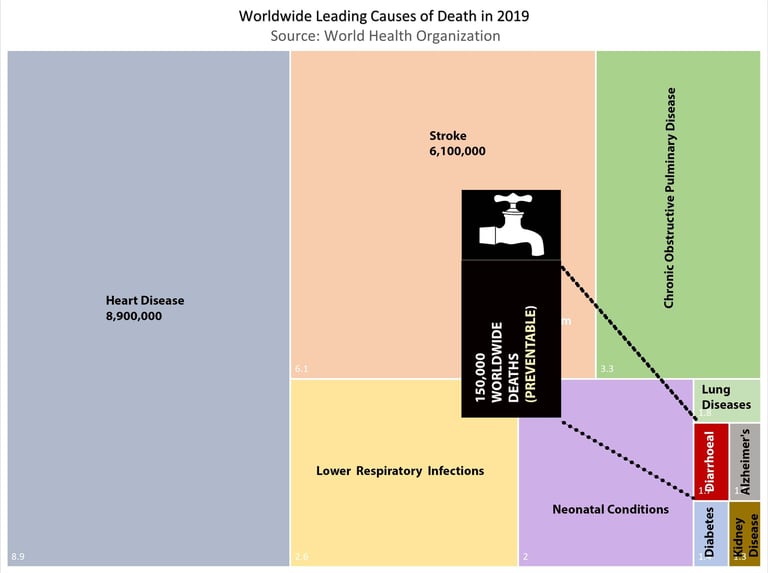Safe Drinking Water
Many communities experiencing disadvantage may not have access to electricity or transportation to easily access safe drinking water. Incidentally, water pollution (along with air pollution) is one of the most common and preventable causes of illness and death in the world.
Safe water for drinking is called potable water. Non-potable water includes any water toxic to humans. It can include anthropogenic toxins from chemical waste or metals, for instance. It can also include water that carries pathogens (such as bacteria, viruses, protozoa, and helminths.) These can come from organic sources like feces or something rotten.
The device presented on this website can treat water for pathogens and thereby reduce infections that lead to severe illness or death. Moreover, the treatment device can assure that appropriate levels of disinfectant are safely used in the treatment process.
Even previously treated water can be susceptible to pathogens in the process of storage or distribution. For instance, a child with unclean hands could touch a water bottle or drop something into a water storage tank. In such a case, pathogens could reproduce and re-infect the water. For this reason, bottle washing and sanitation are a crucial part of any community.


Among the top 10 causes of death, access to potable drinking water is highly preventable.
Despite education on sanitation, communities and water treatment facilities sought ways to assure the safety of water --even if water may have been previously treated. One strategy is to keep trace amounts and appropriate levels of free chloride ions in water. The United States Environmental Protection Agency (EPA) recommends no more than 250 mg/L of chloride ions [or specifically free radical chloride ions] for safe water.
When water is treated with chlorine using standard household bleach [or sodium hypochlorite at 5% aqueous solution,] chlorine reacts with pathogens until almost all free radical chloride ions both react with and annihilate pathogens such that, after reacting, there are no more than 4 parts per million of free chloride ions in the water.
Litmus paper (for drinking water testing) is sensitive enough to detect free chloride ions at a precision of single digits per parts per million. These can be used to periodically calibrate a batch mixer for a given water supply.
